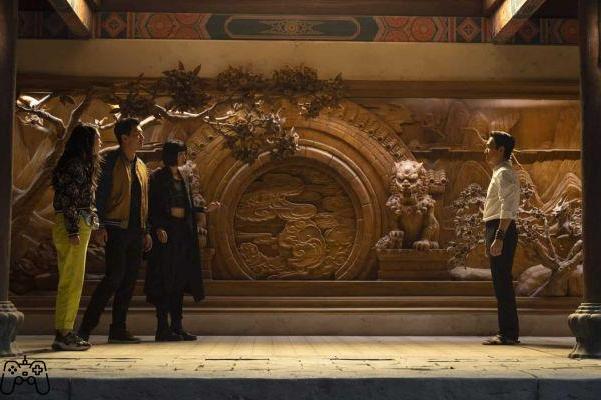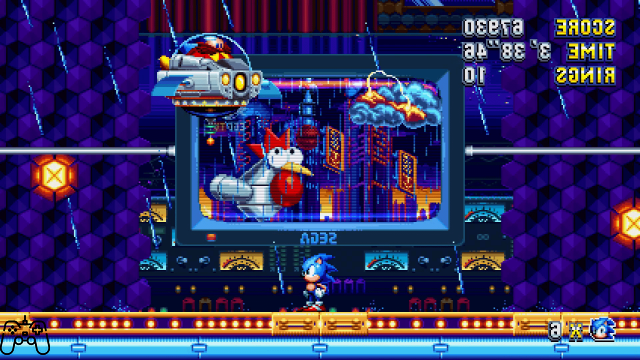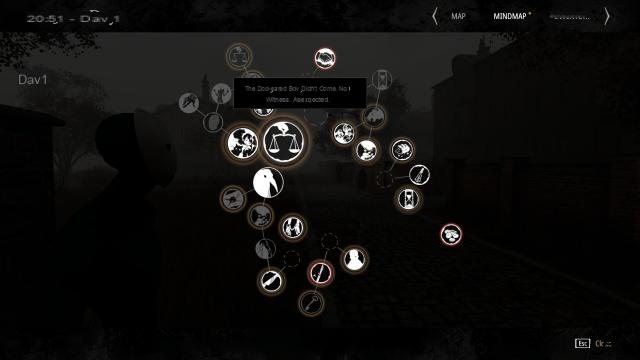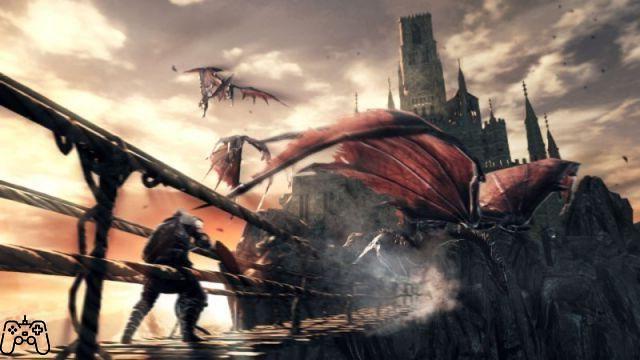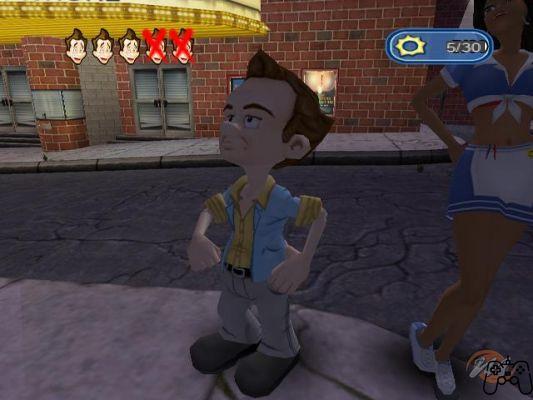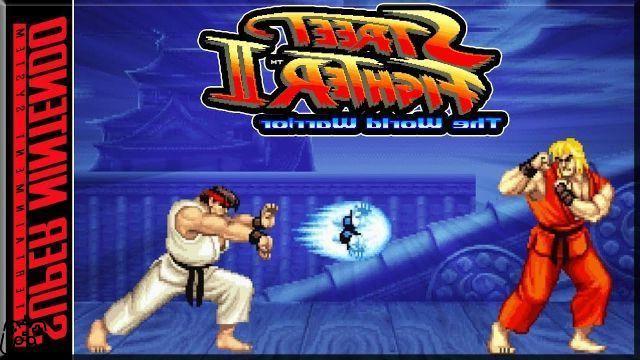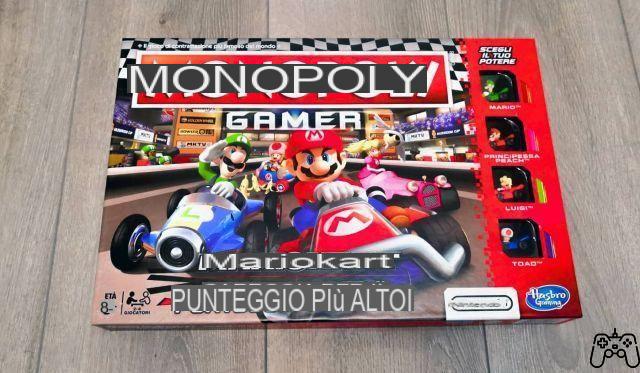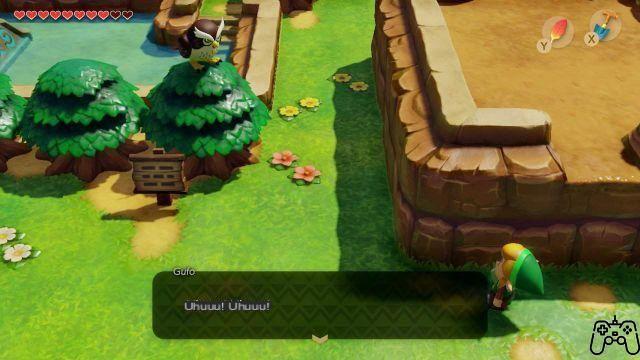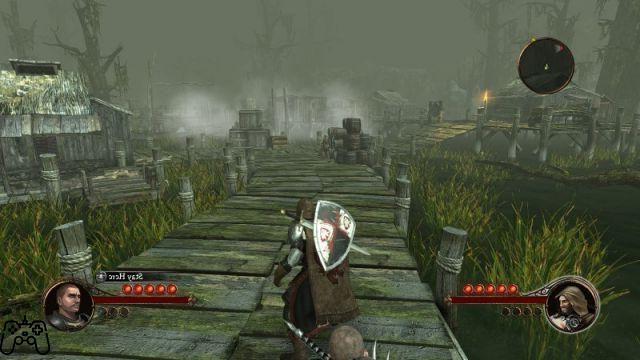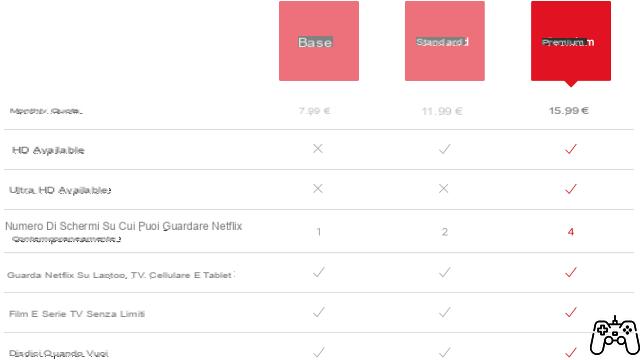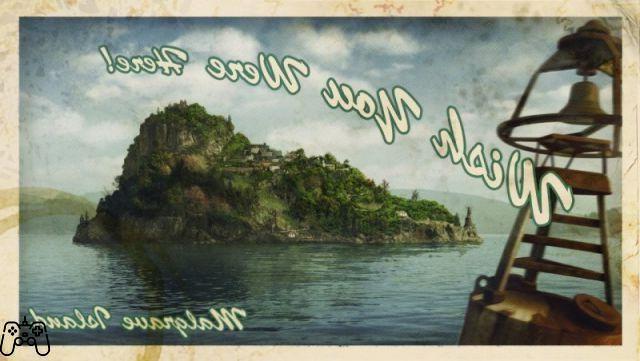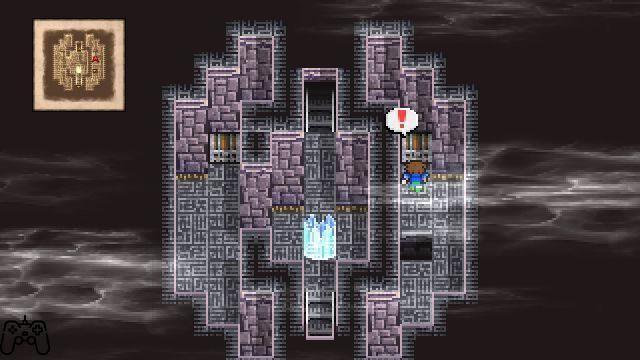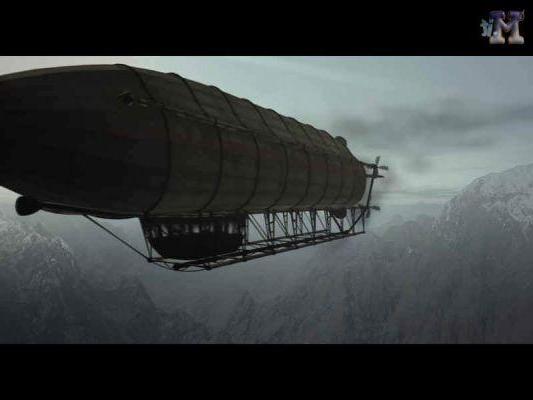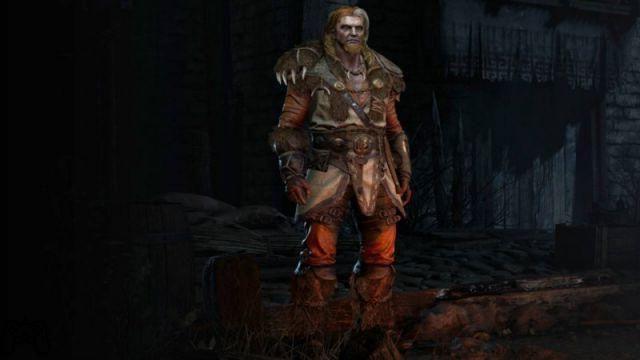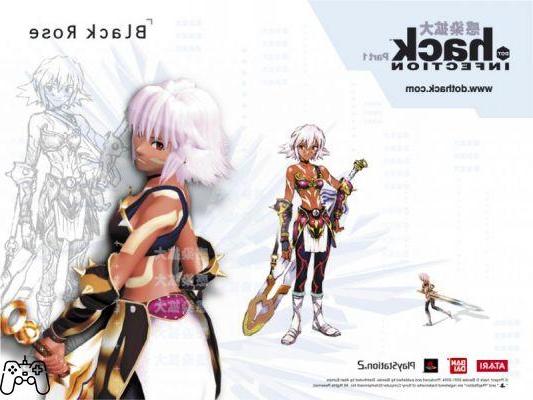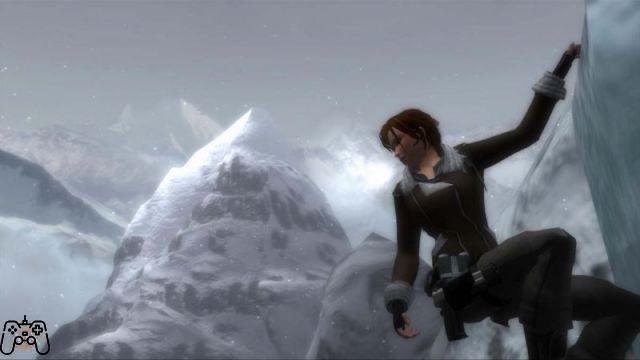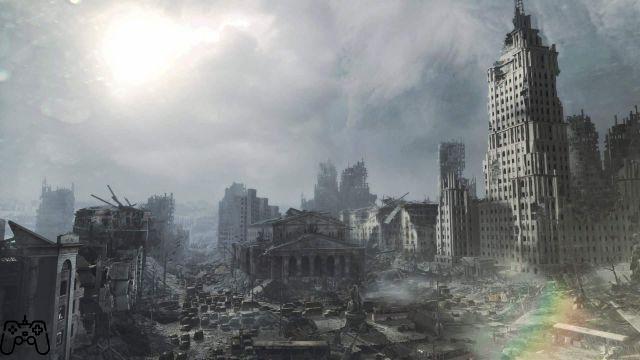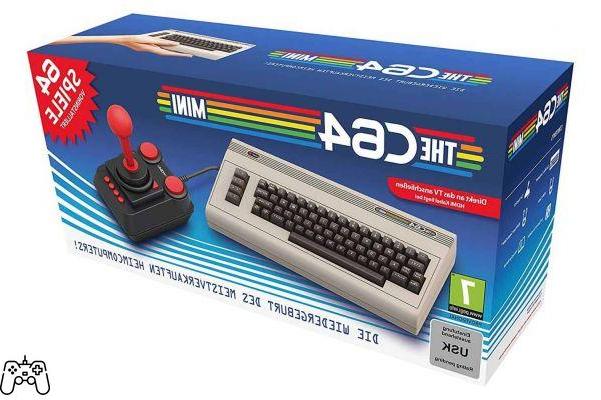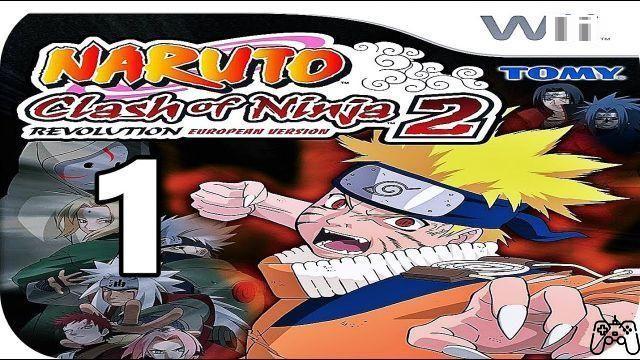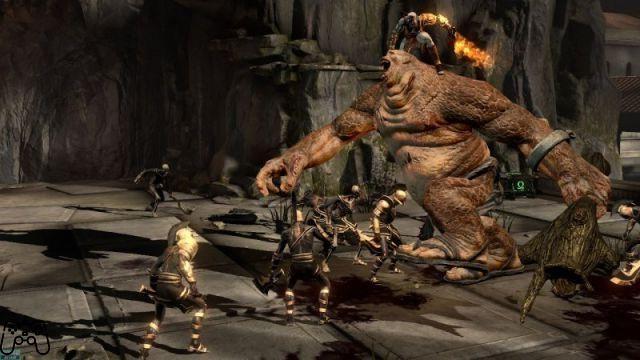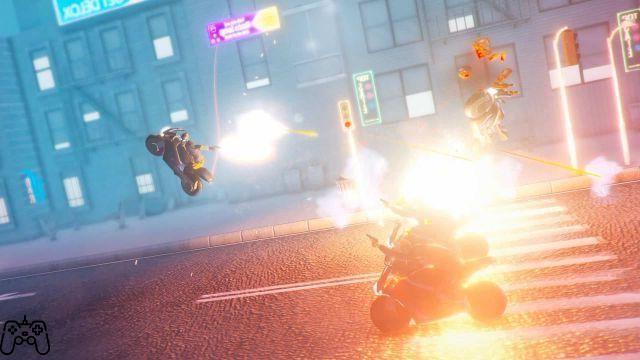Initial hints
Minecraft is a sandbox and as such therefore does not offer a purpose to achieve, a goal to fulfill, missions to complete or a storyline to conclude (for now). Minecraft puts tools and a game world at your disposal, leaving you the pleasure of discovery. However, the first impact can be quite brutal. If the article on the home page has intrigued you, but you feel confused moving among the blocks, this guide is designed for you.
In a few lines the different activities allowed by the game will be introduced and illustrated, but first it is necessary to introduce some basic concepts. First of all, the two game modes: Build and Survival. The first allows you to simply build structures, destroy them and rebuild others, without having to worry about enemy presences. In Survival mode, on the other hand, you will not only have to take care of the buildings, but also take care of the health of your character jeopardized by the presence of mobs. The number and skill of the mobs depends on the selected difficulty level. At Peacefull level, the only mobs allowed to populate the play area will be the harmless ones. The other three levels (easy, normal and hard) provide for a level of mob aggression gradually increasing. The mobs appear only in the dark: this means that you can move in absolute tranquility if you are in the sunlight and instead have to worry about the mobs in dark environments and during the night. But mob assault isn't the only way your character can lose his life. In fact, you will also have to worry about falls, which are frequent if you move absent-mindedly between the blocks. The damage suffered obviously varies depending on the height and the presence or absence of an armor to protect your character: falling from a few blocks will not cause you damage, to escape unscathed from a flight of a handful of blocks you will probably have a armor, instead plunging from a measurable height in dozens of blocks will lead you to death, armor or not. When you die, your character will be spawned at the starting point. Your belongings stored in the baskets will remain at your disposal (therefore remember to cram the materials collected in the baskets whenever you can) while those that your character carried with him, will remain available at the point where you died for only 15 minutes.
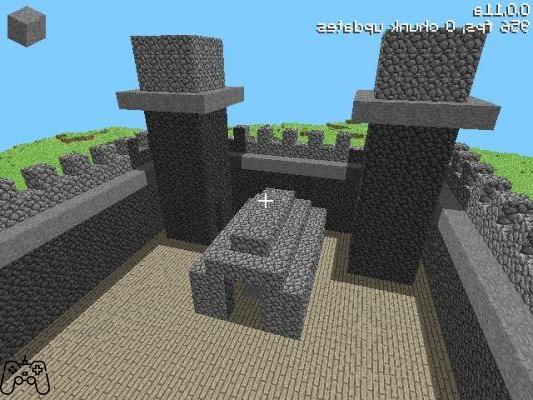
The first minutes of the game
When you start Minecraft for the first time, you find yourself inside a potentially infinite world and an infinity of actions at your disposal, however only one of them is really urgent: the construction of a shelter. As previously mentioned mobs can only attack you in the dark, but the night is looming: the day / night cycle lasts 20 minutes, divided into 10 minutes of day, one and a half minutes of sunset, 7 minutes of night and one and a half minutes of Sunrise. Furthermore, the simple construction of a house is not in itself sufficient to protect you from mobs, since if it does not have lighting, these could also spawn inside it. The first thing to do is to look for some material with which to build your first home and there are several trees around you. Approaching one of these you will notice that one of the blocks that makes up the trunk is highlighted: click on it with the left button (the operation you are performing is mining, we will talk more about it shortly) until the block disappears, dropping a block identical, but smaller than you can pick up by walking on it. Don't worry about the tree falling as only a few objects are subjected to gravity in Minecraft. Repeat the operation just completed on other trees to set aside a good amount of wood. Now open the inventory and observe the grid made up of four squares (2x2): this is used for crafting (another activity described in detail below), i.e. the fusion of the various elements aimed at creating objects. By inserting a previously collected raw wood block into the grid you can see that four wooden planks will appear in the output box. After converting each block of wood collected so far in this way, insert a plank of wood into each square of the grid to obtain a work table that you can place wherever you like in the game world. The worktable gives you the possibility to use a new larger grid of 9 squares (3x3), but before using the latter you need to create sticks by placing two wooden planks on top of each other in the smaller grid. : from two boards made four sticks. Craft a few more sticks before moving on to the nine-square crafting grid which you'll need to create a rudimentary pickaxe and shovel. We number the grid squares as follows:
1-2-3
4-5-6
7-8-9
To create a shovel, insert wooden planks in box number 2 and sticks in boxes 5 and 8. To make an ice ax instead insert the wooden planks in positions 1-2-3 and sticks in boxes 5 and 8. These two Work tools will wear out rather quickly, but they will speed up mining operations. After disassembling the work table, head in search of a mountain or a rocky area from which to obtain coal, whose blocks are similar to those of rock, but differ in black marks on the textures. Use the pickaxe to get the raw coal (shovel and hands will not produce any results) until you accumulate a few pieces in the inventory. Now in the smaller crafting grid place a lump of coal on top of a stick to get four torches. So look for the place that suits you best to build your shelter (or get it from a hole in the ground) and use the torches to keep it lit, preventing the appearance of mobs.
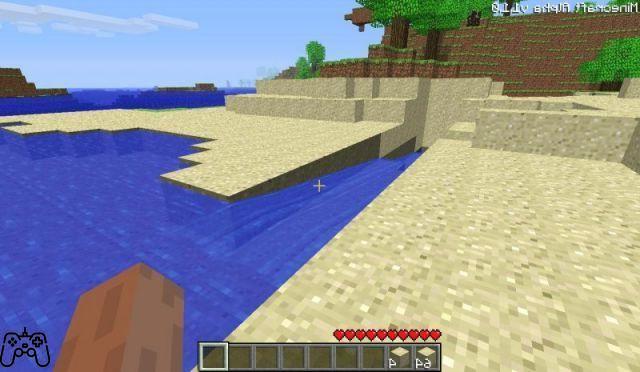
Mining
The mining activity, as suggested by the title we are dealing with, is an integral and fundamental part of the gaming experience. In fact, through mining you will extract the materials that you will use to build the work tools and the dwellings in which to reside at night. Initially you will find yourself using your bare hands, but these are only effective on certain materials: wood, earth and sand. Using your hands to extract other materials will not only be useless, but also harmful, as the block treated with your bare hands will simply disappear, leaving you with nothing to pick up. To collect other materials you will need to create suitable tools (some have been described in the previous paragraph, others will be described briefly). In fact, you need a pickaxe to extract rocks and minerals, while an ax will speed up the extraction of wood. Although, as mentioned before, bare hands can still be useful for collecting earth and sand, the use of a shovel will also make these operations faster and faster. Also, if you find seeds during your exploration you will need a hoe to sow them and make plants grow from them. The use of working tools for extraction will cause their progressive deterioration: the speed with which you need to get new ones will depend on the material you use to make them. The rudimentary wooden tools mentioned in the previous paragraph are good for the first few minutes of play or for emergency situations, but obviously if used on hard rock they will not last long. The use of stone or metals (not all, beware of gold) greatly improves the durability of your items. The most resistant material of all is diamond, but as easily imaginable it is quite rare.
While this is a fairly straightforward operation, some advice can still be useful. Remember to never dig the blocks directly above or below you: it could happen that you fall into an underground lava river or be swept away by a block of sand that would suffocate you. The presence of sand or earth in the subsoil is often an indication of metals in the vicinity: when you come across blocks of sand or earth where you do not expect them be sure to explore the surroundings thoroughly. Finally, if you intend to support long mining sessions, make sure to place a work table nearby, so as to quickly make up for any shortcomings in your work tools (especially torches) and baskets where you can immediately store the precious materials collected, thus avoiding the risk. to lose them following mob attacks.
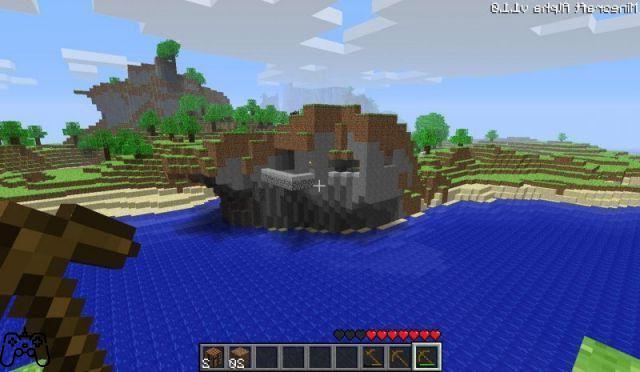
crafting
The crafting activity consists in the combination of the materials extracted during the mining phase in order to obtain objects with which to carry out new activities. To do this you can use the crafting grid always available in the inventory, made up of four squares (2x2) and the largest grid, composed of nine squares (3x3) which will be available whenever you are near a table. work (for its realization see the paragraph "The first minutes of the game").
We will now summarize the main objects that will be useful in the early stages of the game, the materials that will be needed to build them and their position in the crafting grid (where not otherwise specified, it will always mean the work table grid). The description will take place as follows: for each material the position in the grid in which it must be positioned will be indicated (following as a reference the diagram in the paragraph "The first minutes of the game"), the positions not mentioned in the list must remain empty. It should be borne in mind that in order to obtain more resistant tools it is possible on numerous occasions to replace the raw wood with rock, iron or diamond.
Wooden boards: raw wood (the block obtained from the tree) 5 (4 wooden planks will be produced from a block of raw wood)
Wooden sticks: wooden planks 5-2 (4 wooden sticks will be made from two wooden blocks)
Pickaxe: wooden boards 1-2-3; wooden sticks 5-8
Shovel: wooden planks 2; wooden sticks 5-7
Torch: coal 5; wooden stick 8 (this combination produces 4 torches)
Work table: wooden planks 5-6-8-9
Furnace: pebbles 1-2-3-4-6-7-8-9 (the pebbles, never mentioned previously, are obtained from the mining operation on blocks of rock)
Pebbles are the first material with which you can replace the wood in the shovel and pickaxe. So use the wooden pickaxe to extract pebbles from stone blocks: it can be useful to build four or five of them and use them all until they are destroyed to extract coal and other pebbles, then build a more resistant pickaxe and use it to go in search of iron. By then you should have mastered the mechanics of Minecraft well enough that you no longer need this kind of basic advice. In your exploration, if you are accompanied with a bit of luck, you may come across a cave, whose walls are usually lined with good quantities of more valuable and rare materials than those that can be extracted on the surface.
The furnace, mentioned here for the first time, works the same way as the work table, but it will be useful for obtaining metal tools. For example, using the same arrangement indicated for the sticks above and replacing the wood with iron, you will obtain iron bars to be used to build more resistant work tools. The furnace, however, differs from the work table in the need for fuels: since the materials are not simply processed, but melted, you will have to use wood or coal to create the necessary heat. Wood burns faster than coal. Since coal is not an excessively rare material, it is always best to use coal unless your supplies are really close to running out.
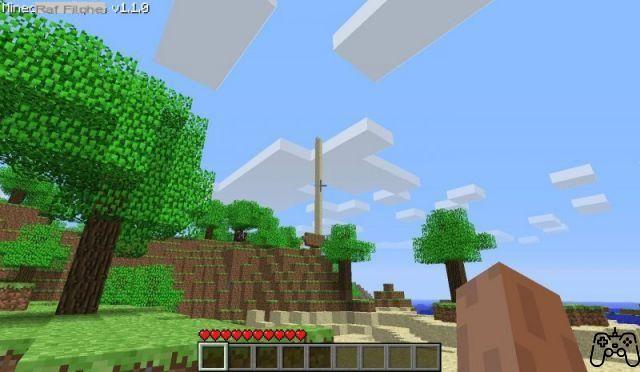
Building
Over the course of the game, your home is bound to change as you gain experience with game dynamics and acquire new materials. But initially your buildings will be made with wood. The construction of wooden structures does not present major difficulties, select the material you want to use, the block you want to fill and right click. This is valid for both the walls and the roof. For the construction of the roof, however, you will probably have to build temporary structures that can make you climb above the walls. When you have collected other materials, you can think about embellishing your home, for example by inserting windows, or making it more resistant by covering it with rock. It may be helpful to keep a few details in mind during construction to make your life easier and avoid dangerous falls. By holding down the left Shift you can move on the blocks and stop at the edge, without running the risk of falling. Also, by looking at the block you stand on and jumping, you can place a block underneath you without the need to build any other structures. However, this maneuver can be dangerous and, when possible, it is advisable to use shelving created as a support.
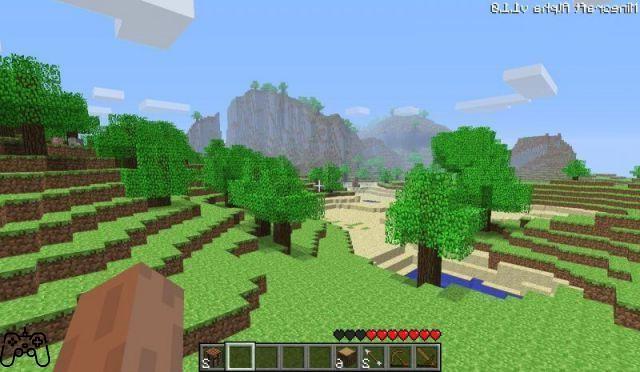
biomes
The worlds randomly generated by Minecraft are divided into different biomes, which could be briefly described as climatic zones. Each biome is recognizable by a different shade of grass and leaves and presents a different panorama.
Plains: wide expanse of grass characterized by a scarce presence of plants.
Tundra: similar to the plain, it has snow-covered ground and an identical scarcity of plants.
Desert: expanse of sand with rare interludes of land. The sparse vegetation is mainly composed of cacti, but it is possible that some blocks of land will generate trees.
Forest: area with high density of trees.
Bosco: area with a good number of plants, but with less dense vegetation than the forest.
Taiga: area with dense vegetation, like a forest, but mostly covered with snow.
Seasonal forest: environment that has more trees than the forest, but less than the forest.
Savannah: extensive plain with a small number of plants.
Rain forest: compared to the forest it is characterized by the dense presence of lakes and trees with wider branches. The soil is often covered with leaves.
Swamp: dense area of pools from which rushes often sprout.
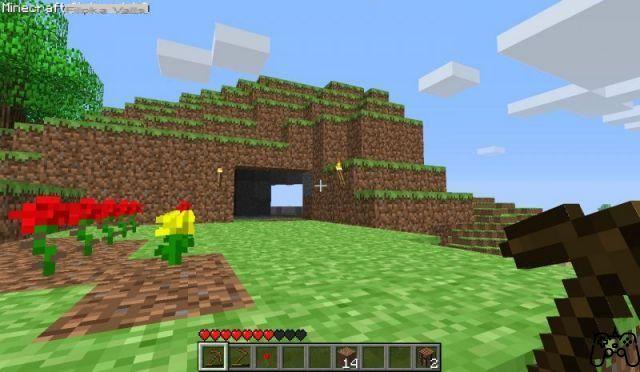
Natural blocks
Stone: among the most popular in the world of Minecraft, it can only be extracted through the use of a pickaxe from which the pebbles are obtained. The latter if cooked in the furnace return some stone.
Terra: another very popular block, it can be extracted with your bare hands. It has no particular uses other than decorative or landscape customization. On the blocks of land, however, it is possible to cultivate.
Sand: one of the few blocks that undergoes the force of gravity; sand is usually found near water, but it is also possible to find some underground or inside the mountains (in this case the nearby presence of metals is probable). Cooked in the furnace produces glass. It is also one of the elements necessary for the creation of TNT.
Gravel: it is recognized for its gray and grainy appearance. It is another of the small number of blocks subjected to gravity. Rarely does it release flint after extraction, which is its only practical utility.
Clay: easier to extract using the pickaxe does not release a block but four pieces of raw clay which when placed in the crafting grid in position 4-5-7-8 generate a block of clay. Clay fired in the furnace generates clay bricks which can then be fired into a brick block.
Obsidian: characterized by a dark color, obsidian is very rare and can only be found in places where water and lava come into contact. It can only be mined using a diamond pickaxe, but it still takes a long time. Its primary use is as a durable construction material, however it can also be used to create portals to hell.
Snow and ice: snow is present as a removable layer on top of a block. By removing the snow with the shovel you get a snowball: by placing four snowballs in the crafting grid and using the same recipe as for clay you get a block of snow. Ice, on the other hand, cannot be extracted, it can only go back to being water. It is possible to walk on it, but its surface is very slippery.
Water: when immersed in water you will notice that bubbles will appear above the hearts that represent your state of health, indicating the breath left in you. Running out of bubbles results in the death of your character. Notice that you are under gravity in the water and you have to press the space bar to swim.
Washed: very dangerous, if you end up inside a pool of lava death will come quickly. It is possible to jump out of it, but in practice this happens very rarely.
Fresh rock: marks the extreme edge of the map. It should be noted above all for the presence of holes that lead to the outside of the playing area and therefore to certain death. The objects in your possession when you fall into one of these holes will disappear from the game world.
Mob Spawner: this block cannot be extracted. With a transparent aspect, it deals with generating mobs within an environment. It can be rendered harmless by surrounding it with torches or destroyed with an extremely durable pickaxe.
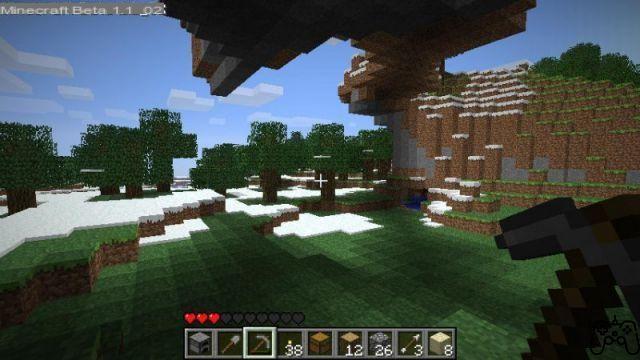
Machined blocks
The worked blocks are very numerous. For convenience, only the most useful in the early stages of the game will be listed below.
Wood: it is obtained by inserting the block extracted from the tree into the crafting grid. Note that if hit by fire it burns (but is not damaged by torches).
Pebbles: are obtained from the mining operation on the stone. Useful in various recipes, it is also found in its natural state in dungeons.
Glass: it is obtained by burning the sand in the furnace. It is the only transparent block in the game.
Clothes: clothes are obtained by attacking the sheep, or by filling the nine positions of the reigns canvas grid. By placing one dress in block 5 of the grid and filling the others with wood, a picture is obtained.
Iron and gold: the iron and gold blocks are obtained by filling the grid with ingots of the relative material, an operation useful only to facilitate their conservation.
Diamond: obtained from nine diamond gems, it is used to build particularly resistant objects.
Ladder: it is obtained by placing wood or pebbles in the boxes 1-4-5-7-8-9. its location, however, is decidedly complicated, moreover it takes a long time to reduce it again to the material used.
Barrier: it is obtained by placing wooden sticks in the boxes 4-5-6-7-8-9. The peculiarity of the barrier block is its anomalous height, one and a half blocks, which makes it impossible to jump.
Basket: it is obtained by using the wood in the boxes 1-2-3-4-6-7-8-9. is a very useful tool for storing items.
TNT: explosive which is effective for the destruction of a large number of types of blocks. It is obtained by placing sand in boxes 2-4-6-8 and gunpowder in boxes 1-3-5-7-9.
Door: made with different materials, it is obtained by filling the positions 1-2-4-5-7-8 of the crafting grid with the chosen material.
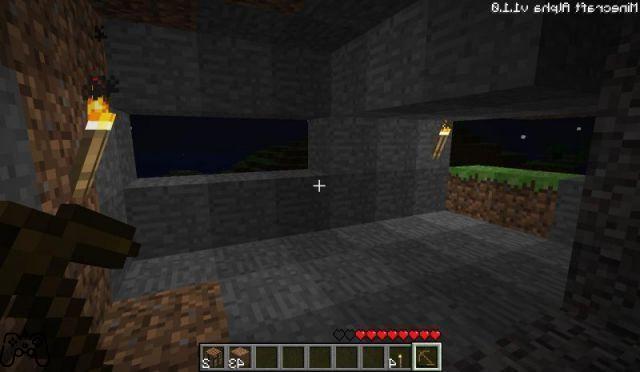
Mobile phone number
Mobs are the other living beings within the game world and can be killed through the use of weapons. They are divided into good and bad. Good mobs are the animals that you see wandering around the game environment. They cannot kill you by attacking you, but only by pushing you down a slope. There is often the suspicion that the pushes are done voluntarily and this puts the definition of good mobs into serious doubt.
Pig: can be cooked in the furnace while healing health.
Cow: provides leather with which to make light armor.
Chicken: supplies feathers with which arrows are made.
Sheep: provides wool.
Squid: it is found in areas that are at least two blocks of water deep. Ink is extracted from the squid with which it is possible to color the wool.
The evil mobs appear only at night and there is no doubt about them, their only purpose is to kill your character.
Creeper: gunpowder is obtained from killing them. When you hear them hissing try to get away as quickly as possible because their explosion is imminent.
spiders: from killing them you get the canvas, pay attention to their ability to walk on walls (except those made of sand.
Zombie: simply dangerous.
Skeletons: armed with bows and arrows, they are among the most dangerous enemies: killing them without being hit by their darts is a difficult task.
Spider Jockey: skeletons riding on spiders. They must be killed separately, so they represent a double pitfall.
Pigment Zombies: if you recognize them and avoid attacking you they will do you no harm (they are present they are in hell).
Ghast: ghosts throwing very dangerous fireballs. However, they are very large, 5 by 5 blocks, and therefore easy to hit (they are only present in hell).
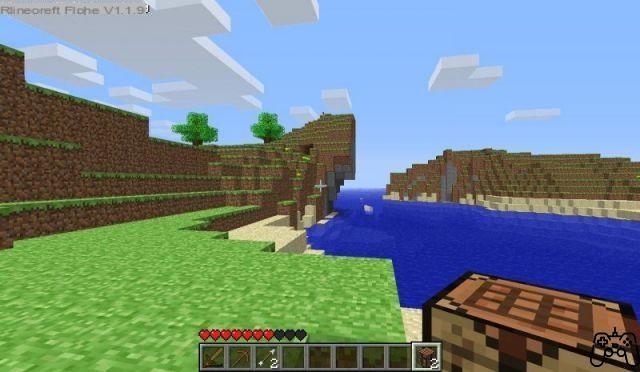
Commonly used objects
The description of the recipe necessary for the realization of the different objects will take place in this way: for each material the position in the grid in which it must be positioned will be indicated (following as a reference the diagram in the paragraph "The first minutes of the game"), the positions not mentioned in the list must remain empty.
Spade: iron bar 2-5; wooden stick 8
Arc: canvas 1-4-7; wooden sticks 2-6-8
Arrow: feather 2; stick 5; flint 8
Helmet: iron bar 1-2-3-4-6
Armor (lower part): barre di ferro 1-2-3-4-6-7-9
Armor (top): barre di ferro 1-2-3-4-6-7-8-9
Boots: iron bars 4-6-7-9
Mug: wood 4-6-8
Mushroom soup: brown mushroom 2; red mushroom 5; cup 8
Roast pork: pig 2; focus 5; coal 8 (note that it must be made inside the furnace and not on the work table)
Inferno
Hell is a rather recent introduction in Minecraft: it is present only after one of the latest updates of the alpha phase and was then revived in the beta. Ten blocks of obsidian are required to build the gateway to hell, which as mentioned is quite rare and difficult to extract. It takes fifteen seconds with a diamond pickaxe to extract a block, fifty or more with less resistant picks. If you don't find obsidian you could create some, but be careful as the process is risky. You have to dig a pit that is four blocks long, one wide, and one deep. Then create a bucket by placing metal rods in boxes 4-6-8 in the crafting grid. With the bucket you just created, collect some lava from a puddle, being very careful and pour it into the hole you just dug. After that, with the same bucket, collect some water and pour it into the hole as well, starting from the exact block in which you previously poured the lava (be careful, this detail is fundamental). With this procedure you get four blocks of lava. Repeat this operation until you have the ten blocks you need.
Now proceed to the construction of the portal, whose structure is that of a frame in which the horizontal sides are of four blocks and the vertical ones of five (following the previous method you could create columns of earth inside which the lava and water are poured directly. on the four blocks already created on the ground). Now combine an iron bar (in position 4) and some flint (in position 8) and use them to light the portal by clicking on one of the inner walls of the frame. The space inside the frame will be filled with a purplish fog: stay inside the fog for a few seconds and you will be teleported to hell.
The first concept to keep in mind is that the proportions between hell and the outside world are quite different. The practical consequence is that it is good to never forget the position of the access portal because by building one to exit far from the one used to enter, you would find yourself definitely far from the area of the outside world known to you. Furthermore, the combination of water and lava does not produce obsidian in hell.
Devote yourself to exploration. The first thing that stands out are the orange blocks, made up of netherrack. Their characteristic is to generate a flame that does not consume the block and can only be extinguished by water. Netherrack blocks can be transported to the upper world with you. Also know that if a Ghast fireball hits the portal it will shut down and remove the purple mist. To turn it back on, you will need to use the same flint and iron combination used the first time or have another fireball hit it.
Hell is a vast and still little-explored territory: when you reach a level of skill that allows you access to this region you will definitely no longer need this guide.




